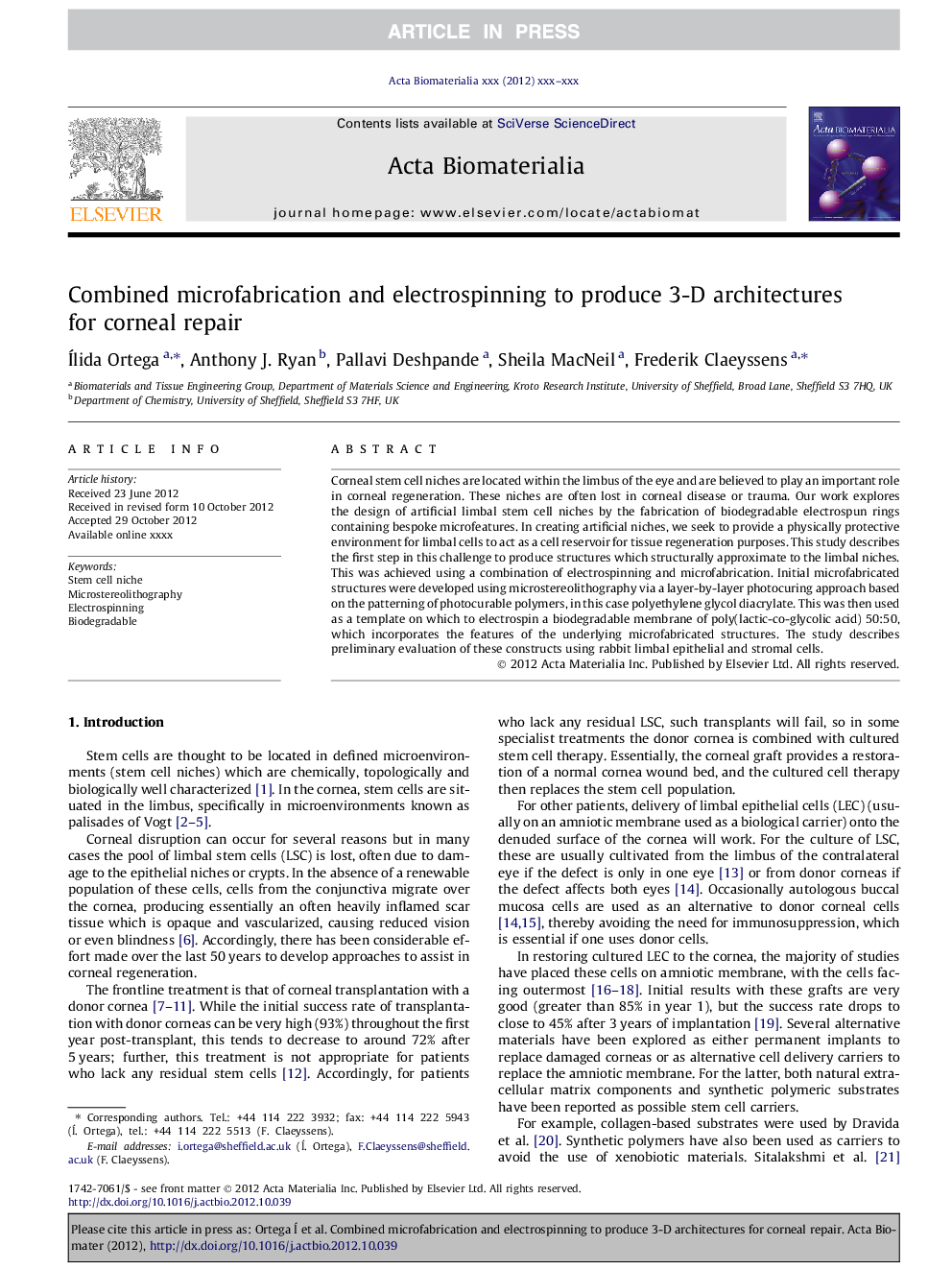| Article ID | Journal | Published Year | Pages | File Type |
|---|---|---|---|---|
| 10159988 | Acta Biomaterialia | 2013 | 10 Pages |
Abstract
Corneal stem cell niches are located within the limbus of the eye and are believed to play an important role in corneal regeneration. These niches are often lost in corneal disease or trauma. Our work explores the design of artificial limbal stem cell niches by the fabrication of biodegradable electrospun rings containing bespoke microfeatures. In creating artificial niches, we seek to provide a physically protective environment for limbal cells to act as a cell reservoir for tissue regeneration purposes. This study describes the first step in this challenge to produce structures which structurally approximate to the limbal niches. This was achieved using a combination of electrospinning and microfabrication. Initial microfabricated structures were developed using microstereolithography via a layer-by-layer photocuring approach based on the patterning of photocurable polymers, in this case polyethylene glycol diacrylate. This was then used as a template on which to electrospin a biodegradable membrane of poly(lactic-co-glycolic acid) 50:50, which incorporates the features of the underlying microfabricated structures. The study describes preliminary evaluation of these constructs using rabbit limbal epithelial and stromal cells.
Related Topics
Physical Sciences and Engineering
Chemical Engineering
Bioengineering
Authors
Ílida Ortega, Anthony J. Ryan, Pallavi Deshpande, Sheila MacNeil, Frederik Claeyssens,
